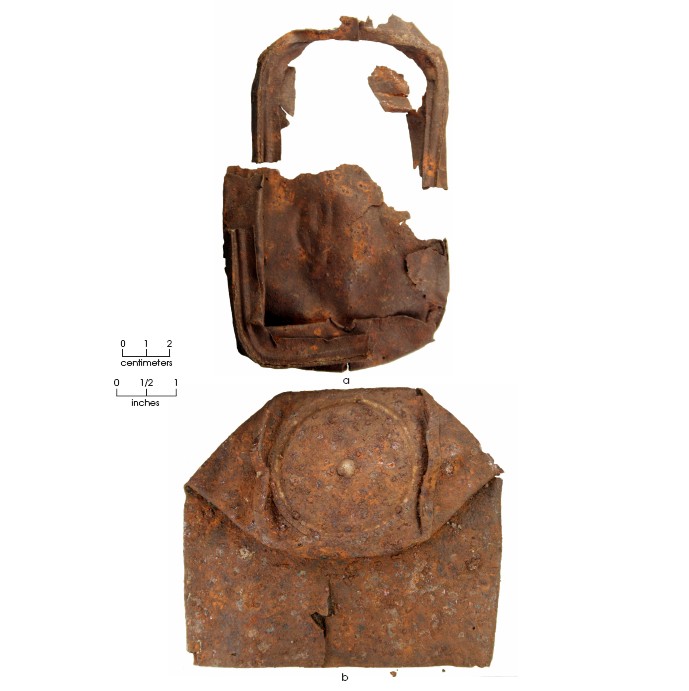
As technology advanced in the nineteenth century, increasing amounts of mass-produced goods became readily available in the United States, including canned foods. Many food items were packaged in metal cans for better preservation, and these became easier to produce through a series of technological changes in the canning industry. Seventy-two metal cans were identified in the Williams farmstead assemblage, but many were severely corroded and the can type could not be identified. All of the cans are classified in the Kitchen & Household functional group because it is assumed that most of them probably contained food products. The two examples pictured here are (a) a rectangular "sardine type" can with a lid that had to be removed with a key, and (b) a cylindrical hole-in-cap can.
Hole-in-cap cans were in common use in the latter half of the nineteenth century. This type of can had a circular hole in its top end, usually about 1- to 1.5-inches in diameter. A food product would be placed inside the can, and then a circular lid soldered into place to cover the large central hole. The small cap had a central pinhole in its center to facilitate the final sealing process. The can and its contents were heated to drive off steam and create a vacuum, and then a small drop of lead solder was placed over the pinhole to seal it from outside contamination. The lead solder used on these cans, however, was eventually found to be very hazardous to human health, especially when people cooked the contents directly in the can causing the lead solder to melt and be mixed in with the food. Hole-in-top cans were quickly replaced after 1897 when new canning machines began to produce modern sanitary cans using crimped metal with no solder. At the Williams farmstead, 18 of the cans were hole-in-cap while only 4 were modern sanitary cans.